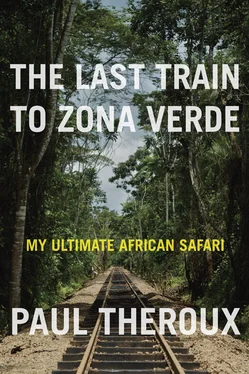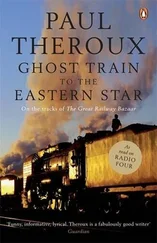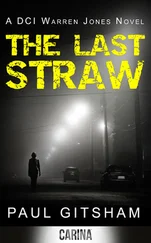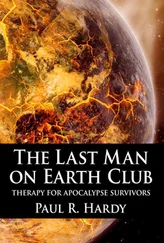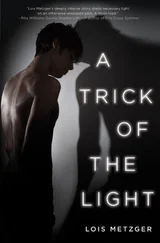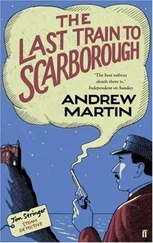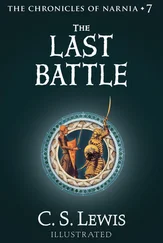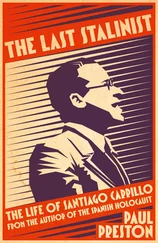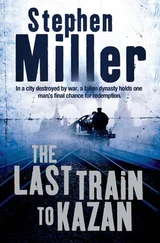One man grinned at me and drank from a large enamel cup, as a cat laps milk, and then he shook it, sloshing the creamy liquid inside.
“Have a drink,” Archie said. I was certain he was testing me, showing me the worst of the township. I had tried to appear implacable, with my “How do you spell that?” and “Let’s see another.” But this was like a jail cell or the worst room of a madhouse. “This beer is made of maize and sorghum. It is called umqombothi .”
“How do you spell that?”
A few days later, I heard this word again, in a lovely bouncy song about a proud woman who makes beer, “magic beer,” performed by an energetic and melodious South African singer, Yvonne Chaka Chaka.
By then we had walked a mile or more and were still in Langa township. But Archie wanted me to see something else, something special, perhaps another shock.
“It is Mr. Ndaba,” Archie said. “He is a traditional healer.”
Mr. Ndaba lived in a room, another low ceiling — I had to stoop to enter, and to kneel to speak to him. The healer was seated on a stool, working his knife against something he held in his other hand.
I took a breath and retched. The room had the stinging smell of decay, a maggoty odor, and I soon saw why. Hanging from the walls and ceiling were old yellow monkey skulls and jawbones, the decaying pelts of small animals, fur, feathers, more bones, a dead pangolin, snake skins, porcupine quills, mummified birds, and in a corner a newly dead rat being chewed by a small mangy kitten.
“This is all medicine,” Archie said. “He can cure AIDS.”
“What’s that?” I asked, pointing to the spotted pelt of a dead animal, possibly a civet cat.
“It is my hat,” Mr. Ndaba said, and now I could see that he was eating. He spoke with his mouth full, and he was still stabbing and carving with his knife. The scrape of the blade was a dull sustained note. What he held was a lump of yellow bone and gray flabby flesh. He gouged some meat from it and raised the knife to his mouth.
“And what’s that?”
“I am eating the head of a pig.” As he hefted the thing in his hand, its ears wagged.
The pong of the rancid flesh hit me and I wanted to vomit.
“He is a healer,” Archie said. “He can cure AIDS. He can make someone fall in love with you. He can cast away spirits. He can make you better. We call him an igqirha .”
“How do you spell that?” I asked, ducking and leaving the hut.
As I left, Mr. Ndaba said goodbye in a kindly way. And I thought, How easy it is to mock the healer with a civet cat pelt on his head, surrounded by stinking bones and feathers and snake skins. But anyone who entered, wishing to be healed, trusting in the healer, would experience what scientists describe as a therapeutic encounter — the sense of well-being that you feel in the presence of a doctor you trust, one with a kindly, inquiring manner and with monkey skulls instead of diplomas on the wall. The stink itself, like the sight of a stethoscope, might create a placebo effect.
Still, in the intimacy of these shadowy huts I felt self-conscious, almost as if I didn’t have a right to be there.
What is the point of these township tours? I heard whites in Cape Town ask again and again, cringing in embarrassed disbelief. Why do Africans advertise their squalor and sell tickets to their slums?
It also struck me as odd that tourists were invited to see the townships and encouraged to examine the sad inner rooms, because they were just as dirty, disorderly, and crime-ridden as in the days of apartheid — perhaps more so. And the shocking thing was that when the residents moaned about the bad old days, all one could think of was how awful, how unfit for human habitation, they were now. Later in the day, in Guguletu, I saw a vanload of well-dressed Italian tourists drinking beer and mineral water at a grubby chicken restaurant — Italians who, without question, would not have dared enter the slums of Naples (depicted in the 2009 Italian film Gomorrah and based on a book of the same name by Roberto Saviano), which resembled Guguletu. There were also a few small restaurants in Guguletu that had been discovered by Cape Town foodies and cautiously visited not just for the meal but for the novelty of the filth and menace of their surroundings.
It seemed that curious visitors, of whom I was one, had created a whole itinerary, a voyeurism of poverty, and this exploitation — at bottom that’s what it was — had produced a marketing opportunity: township dwellers, who never imagined their poverty to be of interest to anyone, had discovered that for wealthy visitors it had the merit of being fascinating, and the residents became explainers, historians, living victims, survivors, and sellers of locally made bead ornaments, toys, embroidered bags, and baskets, hawked in the stalls adjacent to the horrific houses. They had discovered that their misery was marketable. That was the point.
Look how the apartheid system forced us to live like dogs in a kennel! was the intended message. But the message that reached me was that the miserable former hostels for men were now filthy overcrowded rooms for whole hopeless families, most of them indigent and unemployed.
Phaks was waiting nearby. He said, “We go back?”
“There’s one more place,” I said. “Guguletu.”
“Gugs,” he said, using the local nickname, and off we rattled in his old van.
Ten years before, I had walked around Guguletu, noting how the township had achieved notoriety in 1993, when a twenty-six-year-old Californian, Amy Biehl, had been murdered there by a mob. A Stanford graduate, living in South Africa as a volunteer in voter registration for the following year’s free election, she had driven three African friends home to the township as a favor. She had a ticket to California; she was to leave South Africa the next day. Seeing her white face, a large crowd of African boys screamed in eagerness, for this was a black township and she was white prey. The car was stoned, she was dragged from it, and though her friends pleaded with them to spare her (“She’s a comrade!”), Amy was beaten to the ground, her head smashed with a brick, and she was stabbed in the heart. “Killed like an animal,” I wrote in my notebook then.
Four suspects were named; they were tried and convicted of the murder, and the judge, noting that they “showed no remorse,” sentenced them to eighteen years in prison. Three years later, these murderers appeared before the Truth and Reconciliation Commission. They had an explanation for the murder. “Their motive was political and not racial.” They “regretted” what they had done. They newly claimed they had “remorse.” They pleaded to be released under the general amnesty.
Everything they said seemed to me lame and baseless, yet they were freed because Amy’s parents, Peter and Linda Biehl, had flown from California, attended their hearing, and listened to their testimony. They said that their daughter would have wanted a show of mercy, since she was “on the side of the people who killed her.” The Biehls did not oppose the murderers’ being released from prison.
So the killers waltzed away, and two of them, Ntombeko Peni and Easy Nofomela, were — astonishingly — given jobs by the Biehls, working as salaried employees for the Amy Biehl Foundation, a charity started by Amy’s forgiving parents in their daughter’s memory. Around the time I visited, the foundation had received almost $2 million from the U.S. Agency for International Development for being “dedicated to people who are oppressed.”
In 2001, a small cross had been placed near the gas station where Amy had been murdered, and on a crude signboard behind the cross was daubed AMY BIHLS LAST HOME SECTION 3 GUGS — misspelled and so crude as to be insulting.
Читать дальше
